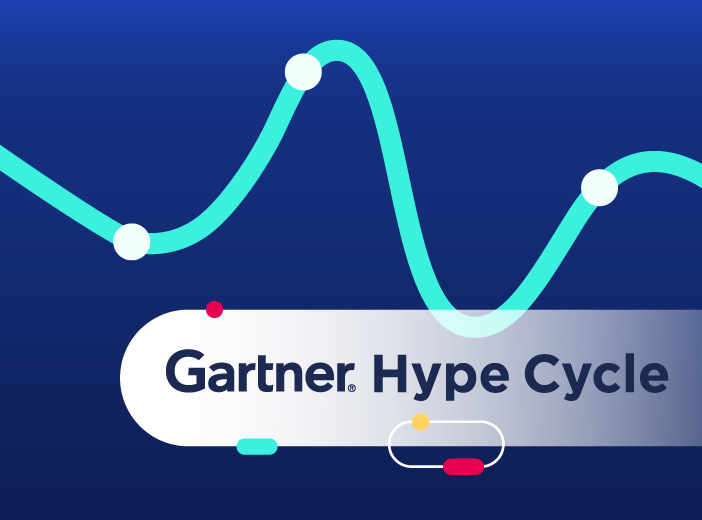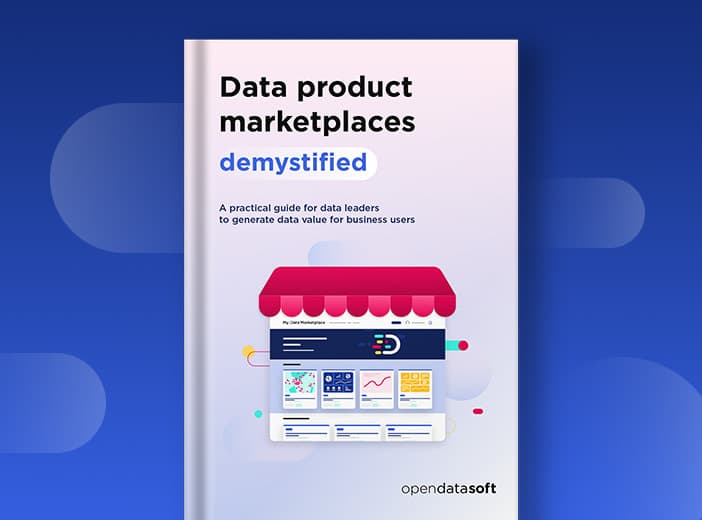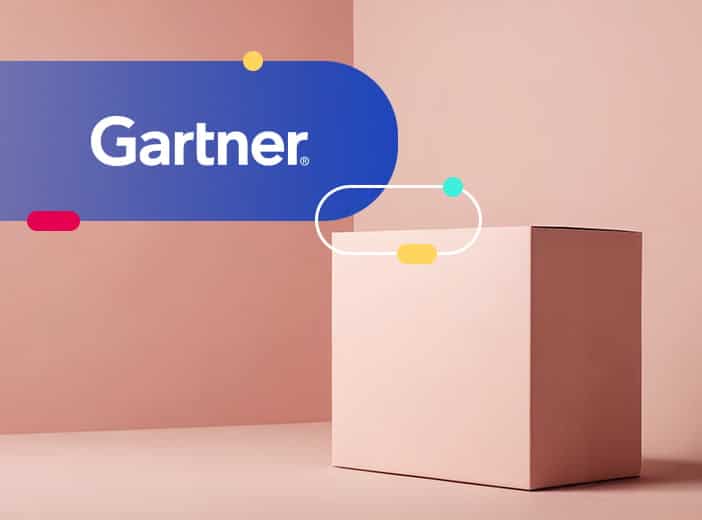Gartner Hype Cycle: How data marketplace technologies are transforming data management
Where should CDOs and data leaders focus their strategies and investments when it comes to technology? To help, we highlight key trends from the new Gartner Hype Cycle for Data Management, focusing on the benefits of data marketplaces and data products.

Data management is evolving rapidly, driven by the twin drivers of artificial intelligence (AI) and the need to create value from the organization’s data. Without reliable, high-quality data, AI programs will not deliver their promised results, while organizations need to become data-driven in order to boost productivity, innovation and improve decision-making. This means that Chief Data Officers (CDOs) have to demonstrate ROI on their investments and support the business and its wider objectives.
Essentially data programs have to move from being seen as reactively managing data to ensure compliance and security to becoming proactive and business-focused, enabling data to be easily and securely consumed across the organization and by partners.
However, there is a huge, and expanding range of data management tools now available. Many may become obsolete over time or be replaced by new technologies. That means making the right choices is crucial for CDOs.
To help, Gartner has just published its Hype Cycle for Data Management, 2025 outlining the technologies to focus on. Two of the key areas it covers are data marketplaces & exchanges (DMEs) and data products, which enable data consumption by both humans and AI and are listed as providing high and transformational benefits respectively. This blog looks at the Hype Cycle in more detail, with a particular focus on DMEs.
The current state of data management technology
In its Hype Cycle Gartner highlights two factors as driving innovation in data management – growing adoption of the cloud and the expansion of generative AI. Both of these are enabling the rise of new technologies and ways of working within data management, helping integrate previously disparate data, increase efficiency and enable automation alongside innovation.
The Hype Cycle
A Gartner Hype Cycle measures the maturity of technologies, based on the current level of adoption and the time it will take to reach mainstream adoption. The aim is to understand the risks and opportunities of adopting technology either too soon or too late. It covers five phases:
- The innovation trigger: the earliest stage in the Hype Cycle, when an event, such as a technological breakthrough or new product raises interest in a technology. Data contracts are a new entry in this category for 2025
- The peak of inflated expectations: usage increases, but the hype still outweighs tangible demonstrations of value
- The trough of disillusionment: the period when the original excitement wears off and early adopters report problems and issues
- The slope of enlightenment: early adopters gain and demonstrate benefits and other organizations begin to understand how they can deploy it to deliver value
- The plateau of productivity: more users realize real-world benefits and the innovation goes mainstream
At the heart of the Hype Cycle is the Priority Matrix for Data Management, which tracks technologies based on the level of business benefit they will deliver, and their years to mainstream adoption. Benefits are quantified as transformational, high, moderate or low, and maturity is covered on a scale from embryonic through emerging to mainstream, legacy and obsolete:
- Data products are seen as transformational, enabling new ways of working and delivering a major shift in the market. They are at an “adolescent” maturity level, and should reach the mainstream in 2-5 years.
- DMEs retain their high level of benefit, enabling new ways of performing processes that will significantly grow revenues or reduce costs. They are at an “emerging” level of maturity, and are expected to reach the mainstream in 5-10 years.
Key technology changes in the 2025 Hype Cycle
Demonstrating the pace of innovation, the Hype Cycle sees a mix of new entrants, such as data contracts, and shifts in position for a range of technologies. For example, AI-ready data has moved from the innovation trigger phase to the peak of hype over the last 12 months.
Data products and DMEs remain in the Peak of Inflated Expectations category. However, data mesh sees a significant shift in its future positioning, being identified as likely to become obsolete before reaching the Plateau of Productivity, with its core value proposition being
increasingly integrated into data products, data marketplaces, federated governance and
other data sharing strategies. This trend is explained in more detail in our recent blog on combining data mesh and data fabric.
The emerging Data Marketplace and Exchange category
Defined by Gartner as providing infrastructure, capabilities and services for both data consumers and producers, the Data Marketplace and Exchange (DME) category covers internal and external platforms that prioritize sharing and accelerating data consumption. This year, Opendatasoft has been Included as a Sample Vendor in the DME category for the first time.
In terms of maturity, DMEs are classed as emerging, with their adoption being driven by the rise of AI and data products. They make it simple and convenient to share data with AI models and agents, and provide a storefront that enables the centralization, discovery, purchase, and consumption of data products both inside and outside the organization. They increase efficiency, simplify data sharing and connect data users with providers in a single space, building trust and collaboration.
The benefits and drivers
Overall, companies are becoming increasingly aware of the value that their data assets provide and are looking at ways to leverage them across the wider organization and ecosystem. Thanks to this, there’s an increasing focus on DMEs, which are seen as providing a high level of benefits, particularly as vendors introduce new capabilities that make them easier to manage, govern, and use. This brings down costs and increases efficiency.
The demands of AI and increased adoption of cloud within data management are also driving greater interest in DMEs, and making it easier and faster to integrate data from multiple solutions and departments.
To ensure that DMEs deliver their promised benefits, organizations need to put in place strong governance and security measures that prevent unauthorized access to sensitive data, particularly when sharing data externally.
Best practices for successful DME adoption
Adopting specific best practices enable DMEs to deliver real value, including:
Focus on usability to drive usage
Ensuring usage of an organization’s DME is key, meaning there must be a focus on making the process of creating, sharing and consuming data products as simple as possible for both users and data producers. Encouraging business users to visit the data marketplace and consume data relies on building trust that they will find the right data, access it easily (such as through visualizations and dashboards), and communicate with the data owner if they have queries. Increasing participation has a positive flywheel effect, leading to more users and driving greater demand for new data products, all ensuring faster ROI and greater value.
Buy, don’t build
It can be tempting for organizations to either build a DME from scratch or extend the capabilities of existing software, such as data catalogs. However, this risks creating a suboptimal solution that doesn’t meet corporate or user needs. There needs to be a real focus on powerful functionality, an intuitive interface and a self-service solution that is easy to maintain, manage, and extend. Gartner advocates adopting prebuilt, best-of-breed DME platforms to avoid management or cost issues, and to ensure access to the latest features and capabilities.
Choose a vendor that fits with your cloud strategy
Organizations will pick cloud providers based on a range of factors, from data sovereignty concerns to price. Make sure that your DME vendor integrates seamlessly with your choice of cloud provider to optimize performance and reduce complexity.
Deliver context to your data
A company’s raw data can be of limited value to non-technical users. As well as making it visual and appealing, organizations should enrich it with external, third-party data (such as geographic or financial information) in order to add context and make it more understandable and usable. Ensure your DME has built-in enrichment capabilities and processors, along with support to help pinpoint the right data sources to access.
Opendatasoft - providing a best-of-breed DME
The rise of the data marketplace category in the Hype Cycle demonstrates the trend for best-of-breed data marketplaces that integrate seamlessly with the wider data management stack.
Opendatasoft is leading this trend, delivering data consumption for all through:
- An intuitive, e-commerce style marketplace experience
- AI-driven search and discovery plus similar dataset recommendations
- Access to all types of data – data products, visualizations, and raw data in a single centralized space
- The ability to meet the needs of all users, from technical staff to non-experts, and AI LLMs and agents via the Model Context Protocol (MCP)
- A collaboration space for the business around data and storefront for data products
- API and export capabilities to integrate with the wider business and technology infrastructure
The platform supports robust governance and the highest level of security through granular access management, powerful workflows to manage access requests, a full audit trail and lineage around data, and partnerships with leading cloud providers. It also lowers administration overheads through an intuitive backend, integration with other management tools, and full support from our experienced team.
Harnessing the power of data
The latest Gartner Hype Cycle for Data Management highlights the critical importance of data to business success. Ensuring that everyone has access to the right data, in the right format for their needs is essential to driving efficiency, increasing innovation and successfully deploying AI. Data marketplaces and exchanges are central to effective, efficient data sharing that increases consumption, meaning they should be on the radar of every CDO looking to deliver greater value to their organization.
Want to find out about Opendatasoft’s data product marketplace solution? Talk to our team to learn more!




